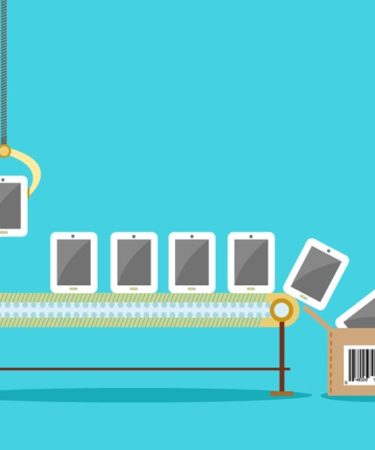The default watchlist only shows the top-performing assets for each sector, so you’ll need to remove each one to create your own. If the chart gets too crowed with lines, zones, retracements, and the like, click the little eye (5) to hide everything – click it again to bring it back. To wipe the chart of all studies, drawings, and indicators, hit the trash can button. Also, you must enter your account balance and trade size into the settings menu for the tool to show the right information. Tradingview supports multiple layout types, but you need the paid version to access them all.

There are several actions that could trigger this block including submitting a certain word or phrase, a SQL command or malformed data. If you have any questions or would like to contact me please send me an email at the following address. Welcome to TradaMaker, a site dedicated to all things trading.
<img class='aligncenter' style='margin-left:auto;margin-right:auto' src="https://www.xcritical.in/wp-content/uploads/2022/08/f5c67d7b-e660-4159-93b0-dfd9601fcc45-768×512.webp" width="302px" alt="How do I use the TradingView

Service médical à domicile de Medici Generici à Rome
Notre équipe fournit un service de soins de santé à domicile, garantissant professionnalisme et confort pour les patients à Rome.
tool” />
Shapes contains all the shape drawing tools Tradingview provides – and yes, that includes rectangles for S & D zones. Circles, curves, triangles, and arcs are all also available. And if those don’t tickle your fancy, select the brush tool to draw a freehand shape. The first (and easier) way is to right-click the price, technical indicator, or level you want to set the alert on and click the “Add Alert” button from the menu.
But with tables, you can build additional metrics and tools for your strategies quite easily. This button opens up a window to fully customize you chart (symbol, status line, scales, appearance, trading) or even add events. This box will contain the symbol of the asset you are looking at. To search for a specific symbol, simply type it in the box and don’t forget to select the symbol type (stock, forex, index, crypto, …).
The tools you see on the left are just a small selection of what’s available and offer a similar experience to TradingView’s website. Frequently used or favorite drawing tools can be saved to the favorites toolbar for easy access. What makes TradingView drawing tools stand out is how easy and initiative they are to use. With no account, your analysis will disappear trading toolbar whenever you open a new chart or exit the site. Plus, after a certain time (I think it’s 15 minutes), a pop up will appear and lock you out of the chart until you either create a free account or pay for the pro version. For us price action traders, the tester isn’t the most useful of tools – our strategies are far too subjective for automated back-testing.

This blog is designed for those who share a love of trading. My goal is to provide a valuable resource that shares my insights into the retail trading world. The stats are calculated based on the coverage of the drawn range. For example, https://www.xcritical.in/ text, price labels, callouts are lumped in one group as all share the similarity of chart annotations and highlights through text and attention-grabbing arrows. It’s easy to get this mixed up, so I had to put it on the list.
The top half of the tab gives you info on the current buy price and sell price, but you can scroll down to see more advanced info, like the daily range, 52-week highs and lows, plus more. If you click the little more button, you can see which technical indicators are currently showing a buy or sell signal. 3 default templates with the most popular tools and indicators are also available, but it’s better to create your own in my opinion – more customizable, you know. Open up the tab, and you’ll see 4 mini tabs, each containing a different set of tools and indicators. Click this to reveal a drop-down menu with all the settings for your account.
Apart from the timeframe, you can adjust the type of chart as well which is just next to the timeframes button. Its review profile is excellent and you can use it in conjunction with a free account to get the basic functionalities. Once you’ve published, other traders will be able to see, like or comment on your chart and idea.
If you want the text to remain static when you scroll on the chart then select the “anchored” options. With these tools, draw Pitchforks, Schiff Pitchforks, Gann boxes, Gann squares, Gann Fans, Fibonacci retracements or extensions and many other options. You can even draw Fib circles, Fib spirals, even Fib Speed resistance arcs. You might be perfectly happy with the above functionalities.
- As a trader, I have been constantly searching for the tools that would help me take my trading to the next level.
- The middle of the chart, where you can see the price of the currency, is called the chart area.
- Rewind markets and review at a speed and resolution you desire.
- If you click on the arrow you will have a list of the most popular indicators, but if you click on the button you will have a choice of indicators in 6 categories.
For your first chart, you can’t go wrong with a trend line. It’s a beginner-friendly way of modeling price action and one of the most commonly used chart patterns for day trading and swing trading. Once you’ve clicked [Settings…] you’ll find yourself in the [Chart settings] window where you can play with a range of options. TradingView doesn’t offer a brokerage service, but you can trade within the website using the [Trading Panel] tab. You’ll find a list of partners you can exchange with if you already have an open account with them. You can also backtest your strategies using the [Strategy Tester] function.
They can then share their indicators on the TradingView community so that others can use them too. Most of TradingView’s technical features are on its charts. So, to access the charts section, you can click on the ‘Charts’ button on the top of the homepage. Its ease of use, fluidity and endless functionalities are matched by none. The bottom toolbar is where you can run a screener, take some notes, code your own indicators with the Pine Editor, launch a Strategy Tester or connect to your broker.
Get creative with world markets by participating in the largest social network on the web for traders and investors. TradingView Desktop is even faster than your default browser. It’s all the same, with 100% synced layouts, watchlists and settings. Free users can apply only up to 3 indicators on the chart at a time. If you click on the ‘Source code’ a new mini window will open at the bottom of the screen that shows the script of the indicator. Traders use this script to create add more formulas to the indicator or even create new ones.
Market replay lets you rewind the market and play it back in real-time, just like a video. I often use this to look back at old trades to see what went right (and wrong) and how I could improve. Financials shows important figures about a stock (earnings, debt, cash flow, etc).



Comment here